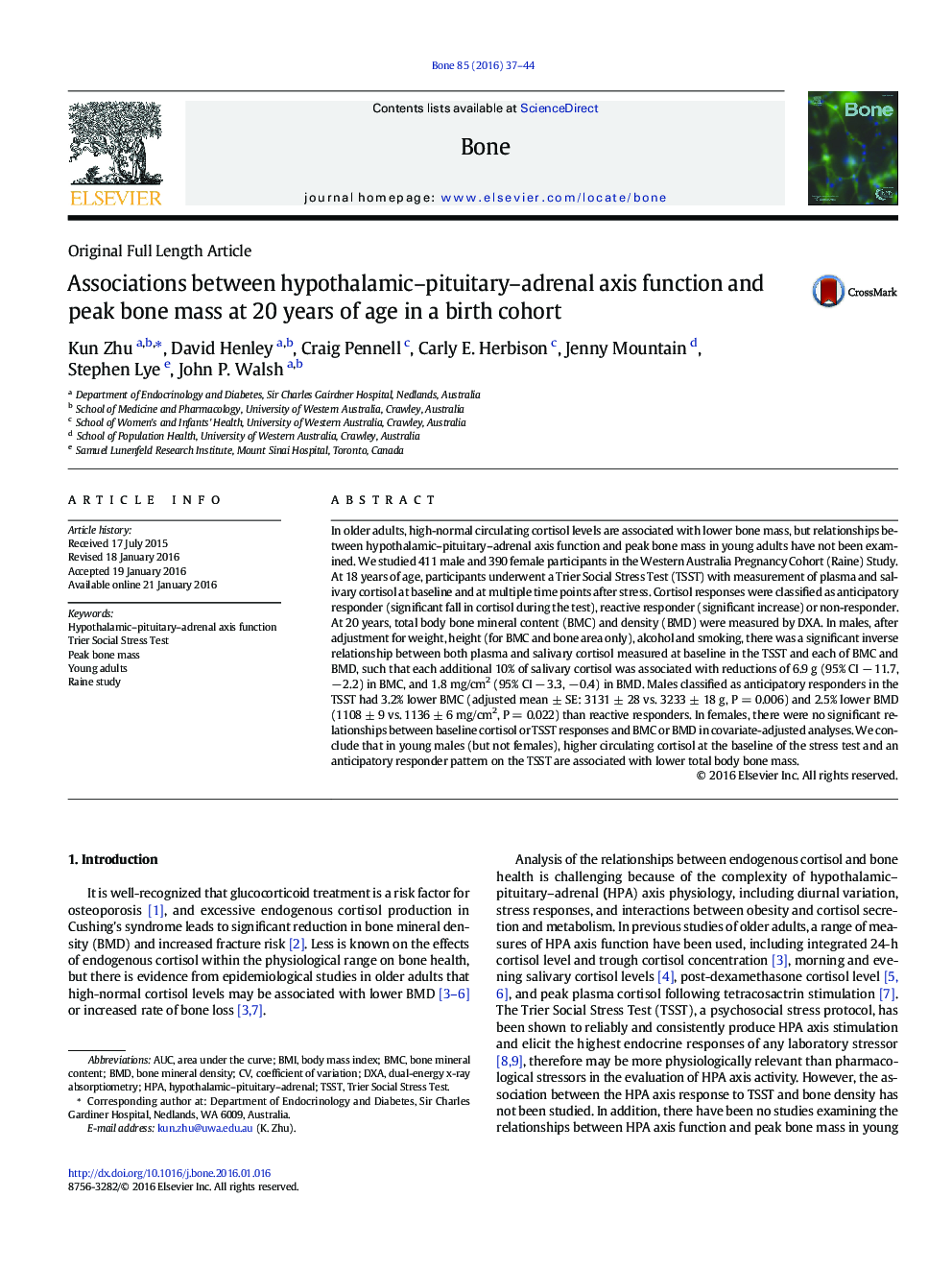| کد مقاله | کد نشریه | سال انتشار | مقاله انگلیسی | نسخه تمام متن |
|---|---|---|---|---|
| 2779126 | 1568134 | 2016 | 8 صفحه PDF | دانلود رایگان |
• In males, baseline cortisol during a stress test at 18 years was inversely associated with bone mass at 20 years.
• Males classified as anticipatory responders in the TSST had 3.2% lower total body BMC than reactive responders.
• There were no significant relationships between HPA axis function and total body bone mass in young women.
• Understanding the role of endogenous cortisol levels on bone physiology may of value in promoting optimal peak bone mass.
In older adults, high-normal circulating cortisol levels are associated with lower bone mass, but relationships between hypothalamic–pituitary–adrenal axis function and peak bone mass in young adults have not been examined. We studied 411 male and 390 female participants in the Western Australia Pregnancy Cohort (Raine) Study. At 18 years of age, participants underwent a Trier Social Stress Test (TSST) with measurement of plasma and salivary cortisol at baseline and at multiple time points after stress. Cortisol responses were classified as anticipatory responder (significant fall in cortisol during the test), reactive responder (significant increase) or non-responder. At 20 years, total body bone mineral content (BMC) and density (BMD) were measured by DXA. In males, after adjustment for weight, height (for BMC and bone area only), alcohol and smoking, there was a significant inverse relationship between both plasma and salivary cortisol measured at baseline in the TSST and each of BMC and BMD, such that each additional 10% of salivary cortisol was associated with reductions of 6.9 g (95% CI − 11.7, − 2.2) in BMC, and 1.8 mg/cm2 (95% CI − 3.3, − 0.4) in BMD. Males classified as anticipatory responders in the TSST had 3.2% lower BMC (adjusted mean ± SE: 3131 ± 28 vs. 3233 ± 18 g, P = 0.006) and 2.5% lower BMD (1108 ± 9 vs. 1136 ± 6 mg/cm2, P = 0.022) than reactive responders. In females, there were no significant relationships between baseline cortisol or TSST responses and BMC or BMD in covariate-adjusted analyses. We conclude that in young males (but not females), higher circulating cortisol at the baseline of the stress test and an anticipatory responder pattern on the TSST are associated with lower total body bone mass.
Journal: Bone - Volume 85, April 2016, Pages 37–44
